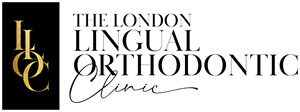Leonardo da Vinci’s Mona Lisa is famous for it, Cheryl Cole forked out a considerable sum for it, the Dalai Lama is never without it and Queen Victoria was thought to be unamused. I am, of course, talking about smiling. It’s a reflex that sets us apart from most other animals and is an invaluable and complex asset.
For all of us, smiling confers significant benefits. One study by computer giant Hewlett Packard measured brain and heart activity to determine a a mood-boosting value. They found that a child’s smile can provide the same level of brain stimulation as up to 2,000 chocolate bars, and the same level of happiness as receiving £16, 000 in cash – giving another level of meaning to the term a million dollar smile.
Smiling is also known to reduce stress, lower blood pressure and increase mood enhancing hormones, and can actually make you healthier. It was confirmed in a Penn State University study that we not only appear more likeable and courteous when we smile, we are perceived to be more competent as well.
According to psychologist Dr Millicent H. Abel, Understanding the smile appears deceptively simple, yet it can be quite complex. Despite the fact that we seem to understand the different meanings behind a smile without conscious effort, studies of the smile are still in their infancy.
The first recorded scientific study into smiling was undertaken in the early part of the nineteenth century by the French neurologist Guillaume Duchenne de Boulogne. He examined the heads of people who had been executed by guillotine to study how the face muscles worked. Coined the Duchenne smile, he found a genuine smile to be one which uses the muscles at the side of the eyes. A non-Duchenne smile only raises the corner of the lips – otherwise known as the a fake smile.
In the meantime, think how many meanings your smile has you might be surprised.













